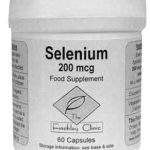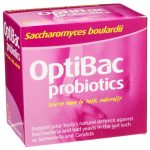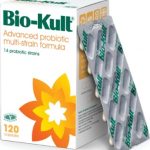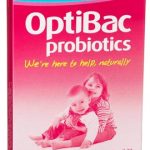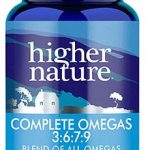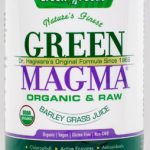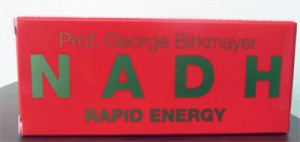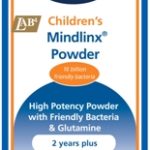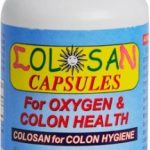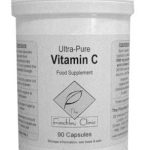All things considered, the term ‘free radicals’ sounds more like some sort of grassroots political movement than tiny little things that, once inside our bodies, can cause serious disruption and damage. However, don’t doubt it; they’re most certainly the latter. For decades now, free radicals are something that many of us have heard about, but how many of us actually know what they are, the dangers they pose and how to stop them and mitigate their effects?
Fundamentally, what free radicals do in our bodies is to corrupt molecules like fats, proteins and DNA; while antioxidants target and reduce their damage, by scavenging and combating them.
The dangers of free radicals
To be precise, free radicals are actually atoms, ions or molecules, so microscopically small they’re extraordinarily small; but far from insignificant. Indeed, they pose the danger they do because they come with an unpaired electron. This means they’re extremely reactive; they’re constantly searching for something from which they can get another electron to pair with their single electron.
And it’s during cellular metabolism that free radicals show themselves up in the body1, for during this process – when the body’s cells use oxygen to convert food into energy, Adenosine triphosphate(ATP) – free radicals pop up and, via what’s called oxidation, steal electrons from other molecules; everything from proteins to fats and cell membranes to DNA. This then – often referred to as oxidative stress (or damage) – can dramatically alter the make-up of those molecules, thus contributing to the ageing process and aiding the development of countless degenerative diseases. So, the likes of arthritis, Alzheimer’s, Parkinson’s, hypertension, heart disease and muscular dystrophy can all be caused, in part, by free radical damage.
But how do free radicals get into our bodies in the first place? Well, harmful environmental factors often play a role; pollution, cigarette smoke, alcohol, toxic metals, industrial chemicals and radiation2. Yet, at the same time, it would be foolish to try to consume no free radicals – it wouldn’t be possible anyway – because, like it or not, at low levels they’re of genuine benefit to the immune system, as it uses them to fend off hazardous pathogens to ensure it functions effectively3.
The power of antioxidants
So, as with many things in nature and inside our bodies, it’s a matter of balance. We require help to ensure the volume of free radicals inside us don’t get out of control; we require something to ensure there’s balance. And that thing is antioxidants. How so? Because by regularly consuming antioxidants, we’re offering up something that actively donates an electron to individual free radicals during oxidation, thereby preventing the latter to cause oxidative stress and major damage to other molecules4.
And, handily, there’s an abundance of antioxidant sources out there. You can consume them by maintaining a nutritious, balanced diet, as many common fruits and vegetables contain antioxidants:
- Anthocyanins – occurring in berries, red cabbage, grapes and many boldly-coloured foods (indeed, they account for the colour of blueberries and raspberries), anthocyanins actually provide many health benefits5
- Curcuninoids – effective at activating the immune system, they help promote brain health among many other things
- Vitamin C – aids the immune system and general good health; found in oranges, lemons, kiwi fruits, broccoli, cabbage and red and yellow peppers
- Vitamin E – a common component of multivitamins and supplements, it’s known for its antioxidant properties and naturally occurs in sunflower oil, green vegetables and nuts
- Selenium – highly important for thyroid health, it can be consumed via nuts, lima beans, chia seeds and brown rice.
Antioxidant supplements
Unfortunately, though, due to the long list of environmental factors that can expose us to free radicals (see above), for some people a decent diet on its own many not be enough to supply them with an adequate number of antioxidants. This then is where supplementation can come to the rescue.
And, if you’re looking for the best antioxidant supplements on the market (and why wouldn’t you be?), you might want to try MegaHydrate. Available from us at The Finchley Clinic, it’s proven to deliver full-body hydration for optimal health – and great protection against free radical damage. This is because it’s rich in silica hydride, the only component known to dramatically increase zeta potential, as well as offering a rich, powerful blend of antioxidants that, together, amount to a free radical-combating effect about 10 times stronger than vitamin C alone.
Other supplements we provide and highly recommend for their antioxidant properties include:
Cell Fuzion – an advanced antioxidant formula that energises the work of mitochondria in the body’s cells (critical to cellular metabolism) to prevent DNA damage
MicroCell Nutriguard Plus – contains comprehensively powerful antioxidants such as Vitamins C and E, zinc citrate, alpha lipoic acid, lycopene, beta-carotene and selenium
NADH – aids the supply of ATP to the brain, nerves, muscles and heart, as well as other organs (often also referred to as CoEnzyme 1).
References:
- Cadenas E. and Davies K. J. ‘Mitochondrial Free Radical Generation, Oxidative Stress, and Aging’. Free Radical Biology & Medicine. vol. 29, 18 Oct. 2000, pp. 222–230.
- Lobo V. et al. ‘Free Radicals, Antioxidants and Functional Foods: Impact on Human Health’. Pharmacognosy Reviews 4.8 (2010): 118–126. PMC.
- Gemma C., Vila J., Bachstetter A. et al. ‘Oxidative Stress and the Aging Brain: From Theory to Prevention.’ Brain Aging: Models, Methods, and Mechanisms. Boca Raton (FL): CRC Press/ Taylor & Francis; 2007. Chapter 15.
- Nimse S. B. and Pal D. K. ‘Free Radicals, Natural Antioxidants, and Their Reaction Mechanisms’. RSC Advances, vol. 5, no. 35, 12 Mar. 2015, pp. 27986–28006.
- Lila M. A. ‘Anthocyanins and Human Health: An In Vitro Investigative Approach’. Journal of Biomedicine and Biotechnology 2004.5 (2004): 306–313.



